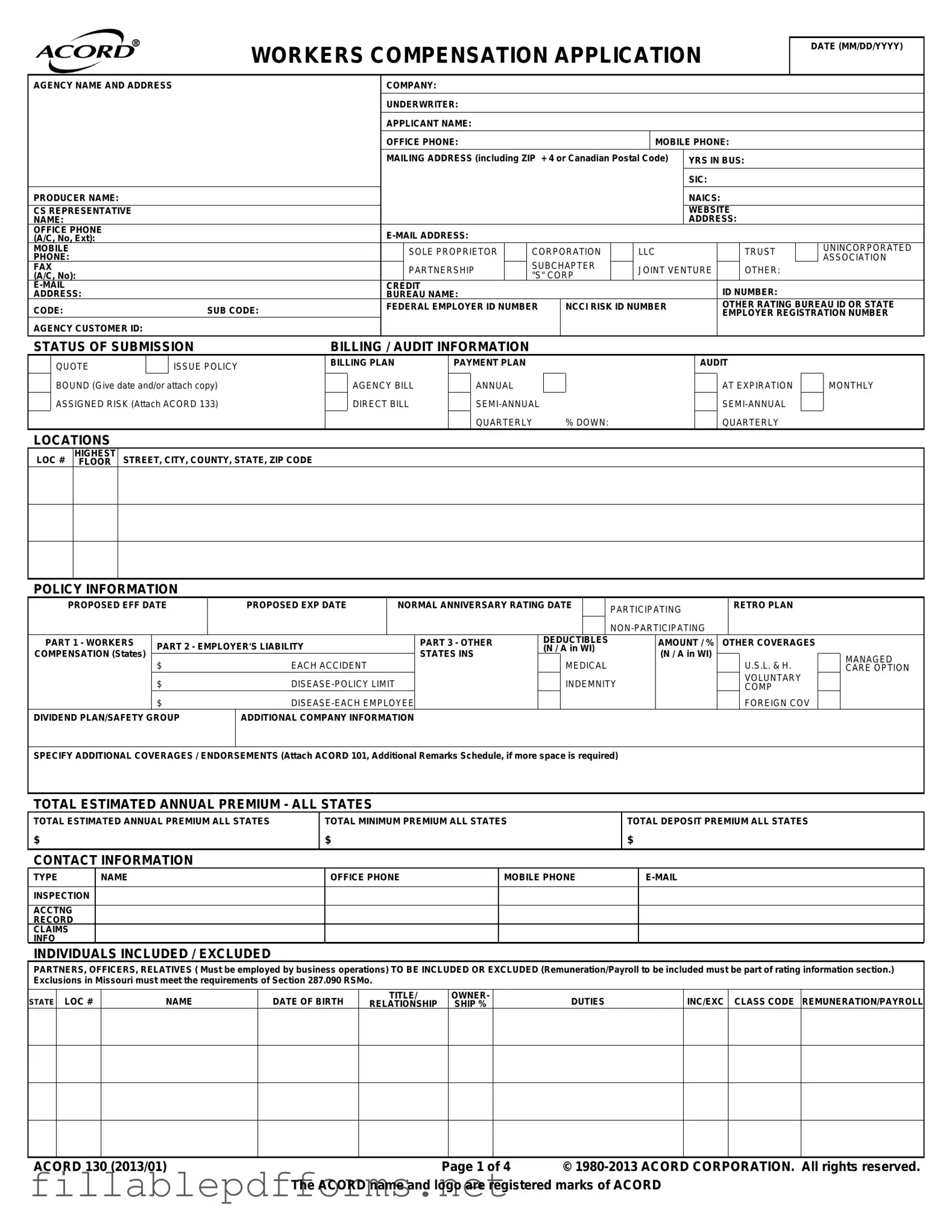Misconception 1: The Acord 130 form is only for large businesses.
This form is applicable to businesses of all sizes. Small businesses also need to provide accurate information about their workers' compensation coverage.
Misconception 2: Completing the Acord 130 form is optional.
Filling out this form is often a requirement for obtaining workers' compensation insurance. Insurers typically require it to assess risk and determine premiums.
Misconception 3: The Acord 130 form is the same as other ACORD forms.
Each ACORD form serves a different purpose. The Acord 130 specifically focuses on workers' compensation, while other forms may address different types of insurance.
Misconception 4: You can skip sections if you don't have the information.
It's important to provide complete information. Missing details can delay processing or lead to issues with your coverage.
Misconception 5: The Acord 130 form does not require signatures.
A signature is necessary. It confirms that the information provided is accurate and that the applicant understands their responsibilities.
Misconception 6: The form is only for new insurance applications.
The Acord 130 can also be used for renewals or changes to existing policies. Keeping it updated is crucial for accurate coverage.
Misconception 7: All information on the Acord 130 is confidential.
While personal information is protected, certain details may be shared with underwriting teams or regulatory bodies as part of the application process.
Misconception 8: The Acord 130 form is straightforward and requires no assistance.
Many applicants benefit from guidance. Consulting with an insurance agent can help clarify any confusing sections and ensure accuracy.
